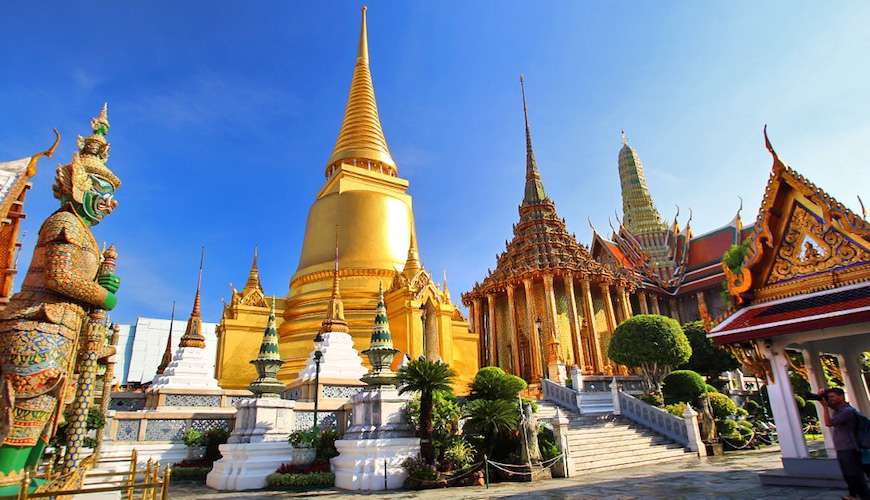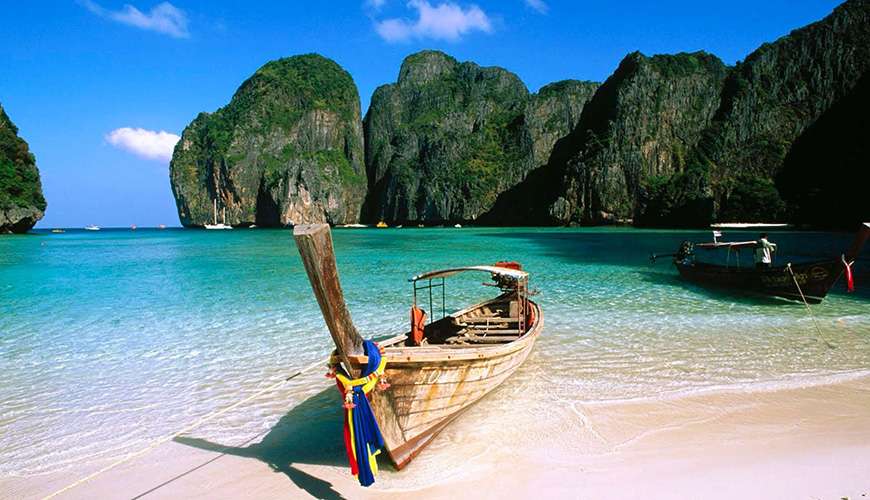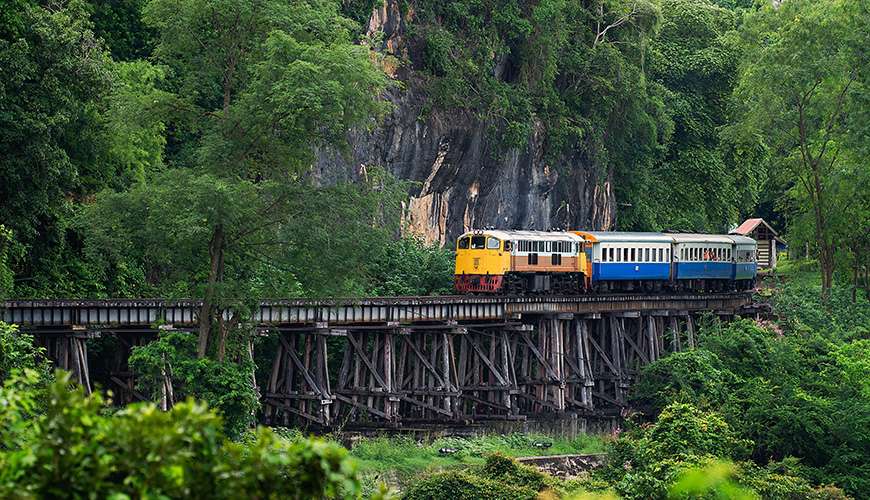Straddling the country between the Tenasserim Hills and the border with Myanmar to the west, and the border with Cambodia established in 1907 after conflict with France in the east,
Central Thailand runs along the coast of the Gulf of Thailand. From there it stretches northwards into the interior until reaching the Phetchabun Mountain Range separating it from north and northeastern Thailand. The region is by far the most populated part of Thailand, containing nearly half its total population.

There are more amazing temples in Bangkok than you can count.
In ancient times, Central Thailand was dominated by the neighbouring Khmer Empire of Cambodia. As the Khmer entered their decline in the 13th century, the independent kingdom of Sukhothai ruled the region. For a roughly a century, Sukhothai was the centre of Thai power and culture, and according to legend was where the Thai alphabet was first introduced, but eventually it was supplanted by the rise of Ayutthaya kingdom to the south.
The next 400 or so years are considered the golden age of Thai art, literature and trade and in 1700, Ayutthaya had the distinction of being the largest city in the world, housing roughly 1 million inhabitants. This golden age came to an end due to repeated conflict with neighbouring Burmese kingdoms, and the kingdom collapsed with the sack of the capital. Following this disaster, a new Thai state centered on Thonburi (part of modern day Bangkok) was formed, leading to the eventual conquest and unification of all of modern Thailand.
Ethnically, the Central Thai dominate, with their language forming the basis for what is today Standard Thai. Less diverse than the north, the region is still home to some minorities, most importantly the Karen people in the west along the border with Myanmar, Khmer in the east near Cambodia and a sizeable population of Chinese Thai in and around Bangkok.

Central Thailand has some amazing beaches that can easily compete with their more famous cousins on the southern islands.
Unlike the north, central Thailand is always hot, with temperatures peaking in March to mid-May. Following this, a rainy season lasts through October, leading into arguably the best weather of the year in mid-November to January, when you can expect cloud-free skies almost every day. This climate is consistent across the region, with the exception of the coastal areas in the east receiving even more rain during the wet season.
Not surprisingly, massive Bangkok dominates the region, and here in the largest city in mainland South East Asia, there is a plethora of stunning temples to visit. Chaotic Khao San road is also worth a night time visit, if only to see the mad scramble of locals and backpackers partying in the street.
Further north, set on an island surrounded by not one, not two, but three rivers, lies the ancient Thai capital of Ayutthaya. The ruins were recognized as a UNESCO world heritage site in 1991 and include a multitude of temples and structures from the city’s magnificent golden age.
East along the coast, your first stop may be in Pattaya, but despite the city’s efforts to reinvent itself, it remains one of the seediest locations in South East Asia, dominated by sex tourism. As such, it’s recommended to keep going east until you reach Tran.

Take a thrilling train ride in Kanchanaburi Province.
Once in Tran, you can hop on a boat and head out to the Ko Chang archipelago, a great place to relax and white sandy beaches, while still avoiding most of the crowds found on more popular Thai islands like Ko Pha Ngan and Ko Phi Phi.
Out west in Kanchanaburi province is where you’ll find the only trekking opportunities and nature sights in Central Thailand. Situated among the Tenasserim Hills, the views are stunning and waterfalls, caves and lakes dot the jungle covered countryside.
For those who frequent Thai restaurants in the rest of the world, Central Thai cuisine will be familiar. Indeed, it’s here that the most famous Thai dishes originate, including Pad Thai, Tom Yum and Papaya Salad. Jasmin rice is also a staple in the region, and accompanies many dishes.
While Bangkok surely dominates the area through its sheer size, there is plenty more to see in this part of Thailand, from glittering beaches to ancient ruins.